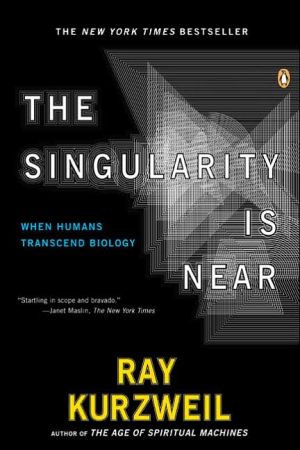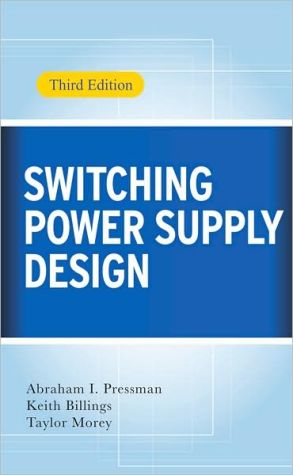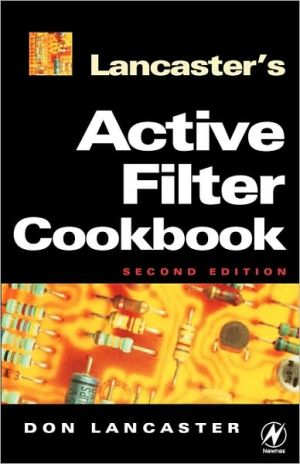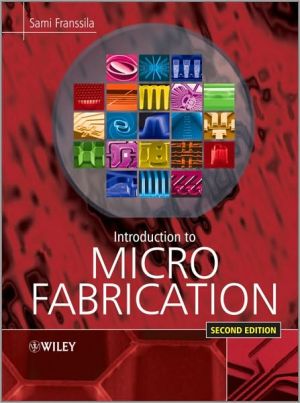Materials Science of Thin Films
This is the first book that can be considered a textbook on thin film science, complete with exercises at the end of each chapter. Ohring has contributed many highly regarded reference books to the AP list, including Reliability and Failure of Electronic Materials and the Engineering Science of Thin Films. The knowledge base is intended for science and engineering students in advanced undergraduate or first-year graduate level courses on thin films and scientists and engineers who are...
Search in google:
This is the first book that can be considered a textbook on thin film science, complete with exercises at the end of each chapter. Ohring has contributed many highly regarded reference books to the AP list, including Reliability and Failure of Electronic Materials and the Engineering Science of Thin Films. The knowledge base is intended for science and engineering students in advanced undergraduate or first-year graduate level courses on thin films and scientists and engineers who are entering or require an overview of the field.Since 1992, when the book was first published, the field of thin films has expanded tremendously, especially with regard to technological applications. The second edition will bring the book up-to-date with regard to these advances. Most chapters have been greatly updated, and several new chapters have been added. Booknews Textbook, written with a materials science flavor, for science and engineering students in advanced undergraduate or first-year graduate level courses on thin films; for participants in industrial in-house courses or short courses offered by professional societies; or for mature scientists and engineers switching career directions who require an overview of the field. Requires reasonable conversance with introductory college chemistry and physics. Annotation c. Book News, Inc., Portland, OR (booknews.com)
Foreword to First EditionxiPrefacexiiiAcknowledgmentsxviiA Historical PerspectivexixChapter 1A Review of Materials Science11.1.Introduction11.2.Structure21.3.Defects in Solids101.4.Bonds and Bands in Materials141.5.Thermodynamics of Materials241.6.Kinetics361.7.Nucleation441.8.An Introduction to Mechanical Behavior471.9.Conclusion52Exercises52References55Chapter 2Vacuum Science and Technology572.1.Introduction572.2.Kinetic Theory of Gases582.3.Gas Transport and Pumping632.4.Vacuum Pumps702.5.Vacuum Systems812.6.Conclusion88Exercises90References92Chapter 3Thin-Film Evaporation Processes953.1.Introduction953.2.The Physics and Chemistry of Evaporation973.3.Film Thickness Uniformity and Purity1063.4.Evaporation Hardware1183.5.Evaporation Processes and Applications1283.6.Conclusion139Exercises140References143Chapter 4Discharges, Plasmas, and Ion-Surface Interactions1454.1.Introduction1454.2.Plasmas, Discharges, and Arcs1474.3.Fundamentals of Plasma Physics1524.4.Reactions in Plasmas1644.5.Physics of Sputtering1704.6.Ion Bombardment Modification of Growing Films1844.7.Conclusion196Exercises198References201Chapter 5Plasma and Ion Beam Processing of Thin Films2035.1.Introduction2035.2.DC, AC, and Reactive Sputtering Processes2055.3.Magnetron Sputtering2225.4.Plasma Etching2335.5.Hybrid and Modified PVD Processes2525.6.Conclusion269Exercises270References273Chapter 6Chemical Vapor Deposition2776.1.Introduction2776.2.Reaction Types2816.3.Thermodynamics of CVD2876.4.Gas Transport2936.5.Film Growth Kinetics3036.6.Thermal CVD Processes3126.7.Plasma-Enhanced CVD Processes3236.8.Some CVD Materials Issues3346.9.Safety3476.10.Conclusion349Exercises350References353Chapter 7Substrate Surfaces and Thin-Film Nucleation3577.1.Introduction3577.2.An Atomic View of Substrate Surfaces3607.3.Thermodynamic Aspects of Nucleation3767.4.Kinetic Processes in Nucleation and Growth3867.5.Experimental Studies of Nucleation and Growth4007.6.Conclusion409Exercises410References414Chapter 8Epitaxy4178.1.Introduction4178.2.Manifestations of Epitaxy4208.3.Lattice Misfit and Defects in Epitaxial Films4298.4.Epitaxy of Compound Semiconductors4398.5.High-Temperature Methods for Depositing Epitaxial Semiconductor Films4538.6.Low-Temperature Methods for Depositing Epitaxial Semiconductor Films4668.7.Mechanisms and Characterization of Epitaxial Film Growth4768.8.Conclusion488Exercises489References492Chapter 9Film Structure4959.1.Introduction4959.2.Structural Morphology of Deposited Films and Coatings4979.3.Computational Simulations of Film Structure5109.4.Grain Growth, Texture, and Microstructure Control in Thin Films5209.5.Constrained Film Structures5339.6.Amorphous Thin Films5409.7.Conclusion552Exercises553References556Chapter 10Characterization of Thin Films and Surfaces55910.1.Introduction55910.2.Film Thickness56210.3.Structural Characterization of Films and Surfaces58310.4.Chemical Characterization of Surfaces and Films60610.5.Conclusion633Exercises635References639Chapter 11Interdiffusion, Reactions, and Transformations in Thin Films64111.1.Introduction64111.2.Fundamentals of Diffusion64311.3.Interdiffusion in Thin Metal Films65911.4.Compound Formation and Phase Transformations in Thin Films66911.5.Metal-Semiconductor Reactions68211.6.Mass Transport in Thin Films under Large Driving Forces69511.7.Conclusion704Exercises704References708Chapter 12Mechanical Properties of Thin Films71112.1.Introduction71112.2.Mechanical Testing and Strength of Thin Films71312.3.Analysis of Internal Stress72312.4.Techniques for Measuring Internal Stress in Films73512.5.Internal Stresses in Thin Films and Their Causes74212.6.Mechanical Relaxation Effects in Stressed Films75412.7.Adhesion76412.8.Conclusion775Exercises776References779Index783
\ From the Publisher"There is a need for new, comprehensive texts and references in [advanced materials processing] and its subdisciplines. This has been especially true for thin films, and of the several recent books on the subject, Milton Ohring's extensive volume is without doubt the best." Nature\ \ \ \ \ BooknewsTextbook, written with a materials science flavor, for science and engineering students in advanced undergraduate or first-year graduate level courses on thin films; for participants in industrial in-house courses or short courses offered by professional societies; or for mature scientists and engineers switching career directions who require an overview of the field. Requires reasonable conversance with introductory college chemistry and physics. Annotation c. Book News, Inc., Portland, OR (booknews.com)\ \ \ From The CriticsA textbook for an advanced undergraduate or first-year graduate course, first published in 1991 and here updated to account not only for the developments in the physical and chemical sciences that have changed the design, manufacture, and analysis of thin films; but particularly to incorporate the explosion in their application, especially in communications and information processing, storage, and display. Students are assumed to be conversant with topics and concepts of introductory college chemistry and physics. Annotation c. Book News, Inc., Portland, OR (booknews.com)\ \








